Prototype. Most of the class M-6 2-6-0 Moguls began their careers as class EF Vauclain compound 2-6-0s delivered by Baldwin between 1901 and 1903. By the mid teens the railroad converted all the locomotives to single-expansion cylinders and reclassed them M-6. Many also had their boilers replaced.
For most of their careers, the M-6 Moguls hauled light freight trains or switched yards. Most of the SP 2-6-0s served into the 1950s, including class M-6 no. 1727, which is on display in Dunsmuir, Calif.
I couldn’t find any published prototype drawings of an M-6. However, the model’s wheel spacing and driver diameter match Southern Pacific equipment diagrams from the Kalmbach Publishing Co. Library files. Dome placement, piping, and other details matched prototype photos of SP class M-6 no. 1727.
Sunset also sells an M-9 Mogul, which uses the same boiler, tender, and running gear as the M-6 but has some detail differences.
Details and paint. The Sunset model is built primarily of brass. All external piping, sand lines, injectors, air pump, and other boiler-mounted appliances are separately applied metal parts. A cord runs from the bell ringer to the cab.
The locomotive cab interior features a detailed backhead with painted valve handles and water sight glass. The roof vent opens and closes. The folding cab apron has etched diamond tread. There is clear glazing in the front and rear cab windows.
The M-6 has a removable scale-size dummy coupler on the pilot. Although not included, an operating coupler could be installed. Some filing may be necessary to widen the coupler pocket.
The 100-C-4 Vanderbilt tender is also well detailed, with separately applied handrails and simulated wood grain on the tender deck. All the tender water hatches open.
The lettering on the locomotive and tender is opaque and straight. The Harriman classification data under the cab number is readable under magnification. The SP lettered its locomotive tenders with “Southern Pacific Lines” from 1913 to 1946. The tender is lettered for a water capacity of 10,060 gallons.
Mechanism and electronics. The model has a die-cast metal frame with the brass boiler and cab mounted on top. A five-pole skew-wound motor inside the boiler is connected to a gearbox driving the second driver axle. The metal side rods turn the other drivers.
All the drivers are sprung to keep them in electrical contact over uneven rails. However, the pilot is only eight HO scale inches above the railhead. Though this is a prototypical distance, if the brass pilot touches both rails, a short circuit will occur. You may wish to file the bottom of the pilot to increase the clearance or glue styrene under the pilot to prevent shorts on uneven track.
The Mogul doesn’t have traction tires but has a drawbar pull equivalent to 35 HO freight cars on straight and level track. However, the locomotive stalled when hauling a train half that size up a 1.5 percent grade. If you run the M-6 on hilly routes, you may want to try Bullfrog Snot traction-tire maker (reviewed in the May 2009 issue of MR).
A six-wire cable connects the QSI Quantum sound decoder and downward-facing speaker in the tender to a plug under the rear of the locomotive cab.
Sounds and lights. At rest the model’s QSI Quantum sound decoder has random automatic sound effects including the air pumps, dynamo, and injector.
Using a DC power pack, you can trigger sounds such as the whistle and bell, and program features such as the volume level and momentum. A QSI Quantum Engineer (sold separately) makes it easier to operate and program the model on a DC layout.
In forward the Mogul’s headlight shines, and in reverse the headlight dims and the backup light shines. The sound of four chuffs per wheel revolution is synchronized to the motion of the drivers. As the locomotive starts moving in DC mode there’s also the separate hiss of the open cylinder cocks until the locomotive exceeds 12 scale mph.
In DCC the model supports 13 functions, including function 7, which turns the open cylinder cock sound on or off. Other functions include the whistle, bell, and coupler crash. Function 9 lets you increase the intensity of the chuffs when you advance the throttle, while keeping the locomotive’s speed constant. This is useful for simulating the locomotive
working extra hard climbing a grade.
The QSI Quantum sound decoder features many programmable configuration variables (CVs), including setting the locomotive’s long address and adjusting the volume levels of individual sounds. An extensive DCC user’s manual that includes a complete list of CVs is available on the Web at www.qsisolutions.com.
I tested the model in DCC using an MRC Prodigy Advance that delivers 16.4 volts to the track. In speed step 1 the model crept along at 2.2 scale mph and accelerated to a top speed of 55 scale mph in speed step 28. You can set the QSI decoder to 128 speed steps for finer control, especially at lower speeds.
With realistic sounds and loads of detail, the Sunset HO M-6 would look great working an Espee branchline layout.
Price: $699.95 (DCC), $649.95 (DC)
Manufacturer
Sunset Models Inc.
37 Fourth St.
Campbell, CA 95008
www.3rdrail.com
Versions: (all Southern Pacific, three road numbers each)
M-6 lettered Southern Pacific Lines, M-9 lettered in post-1946 livery
Features
9-pin DCC plug (DC version)
Dual-mode Digital Command Control (DCC) sound decoder (DCC version only)
Electrical pickup on all drivers and tender wheels
Five-pole skew wound motor
Minimum radius: 18″
Operating magnetic knuckle coupler on rear of tender at correct height (Scale-size dummy coupler on pilot)
Metal RP-25 contour wheels in gauge
Weight: 11 ounces (engine), 16 ounces (engine and tender)





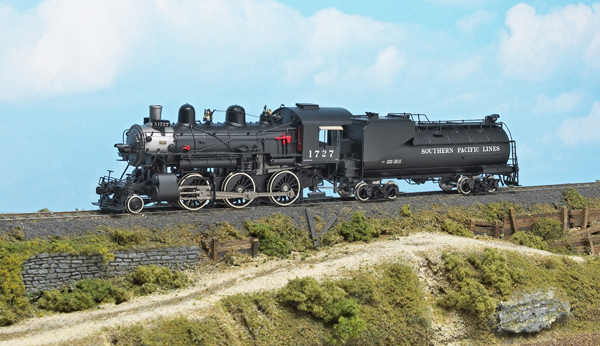
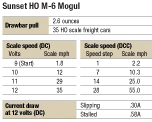

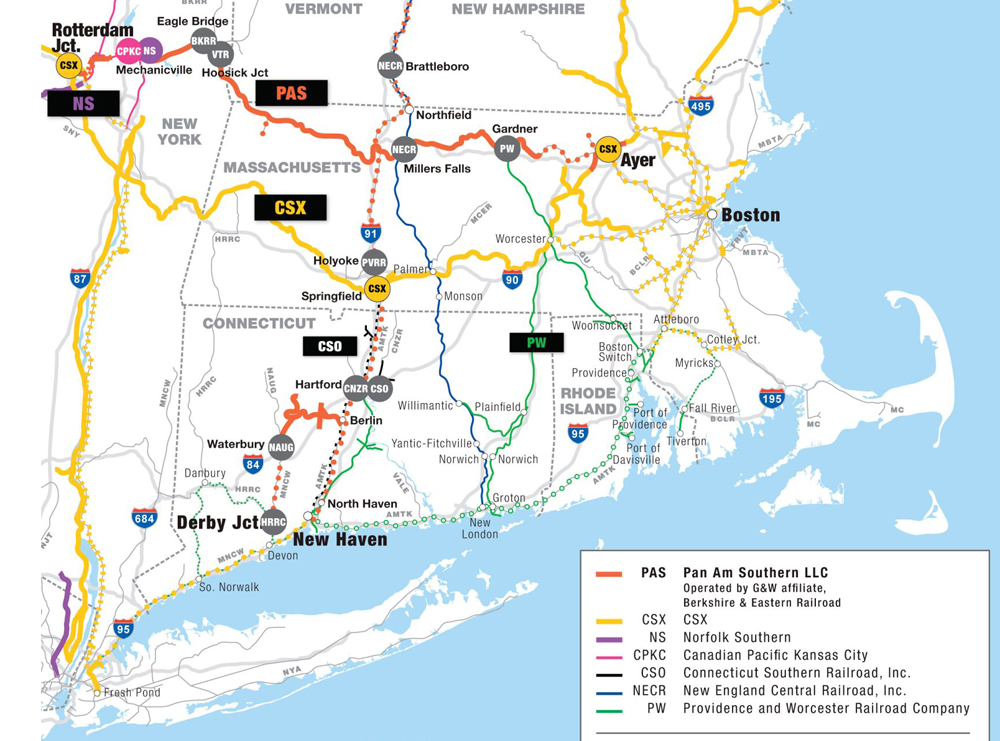
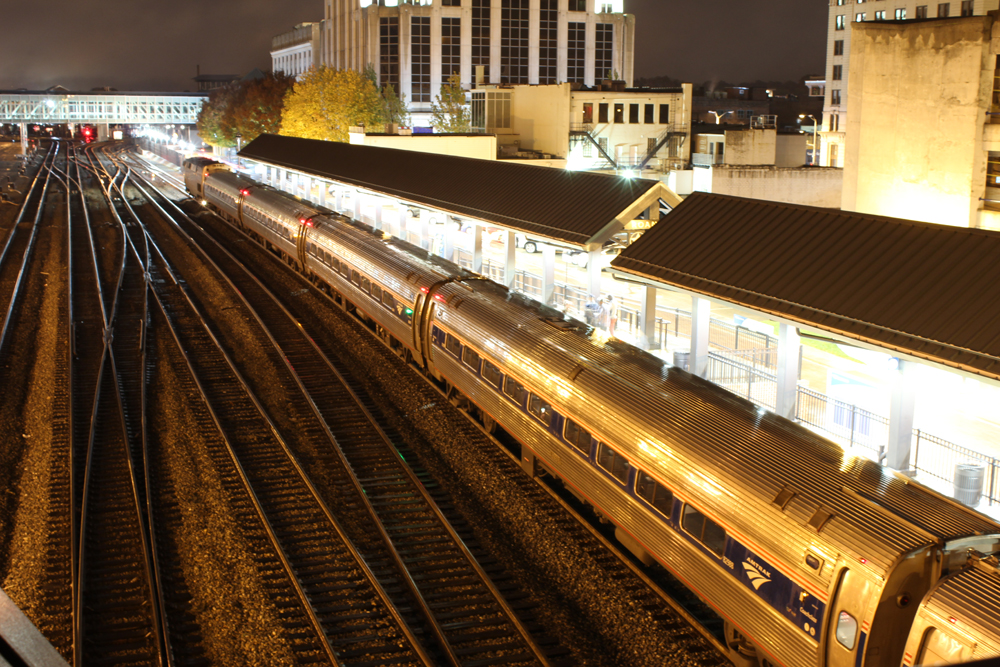
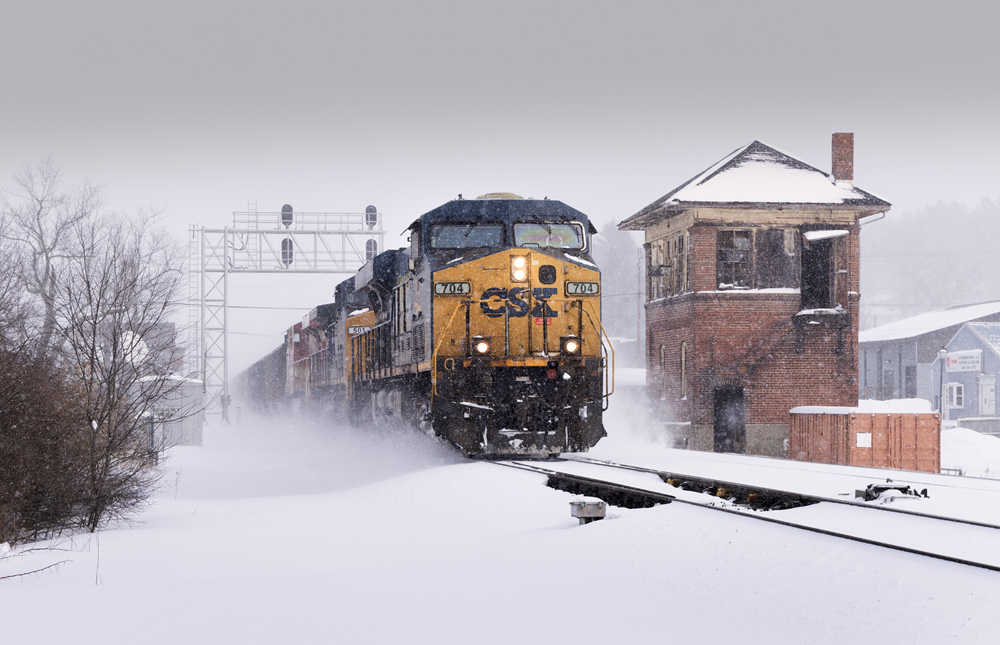
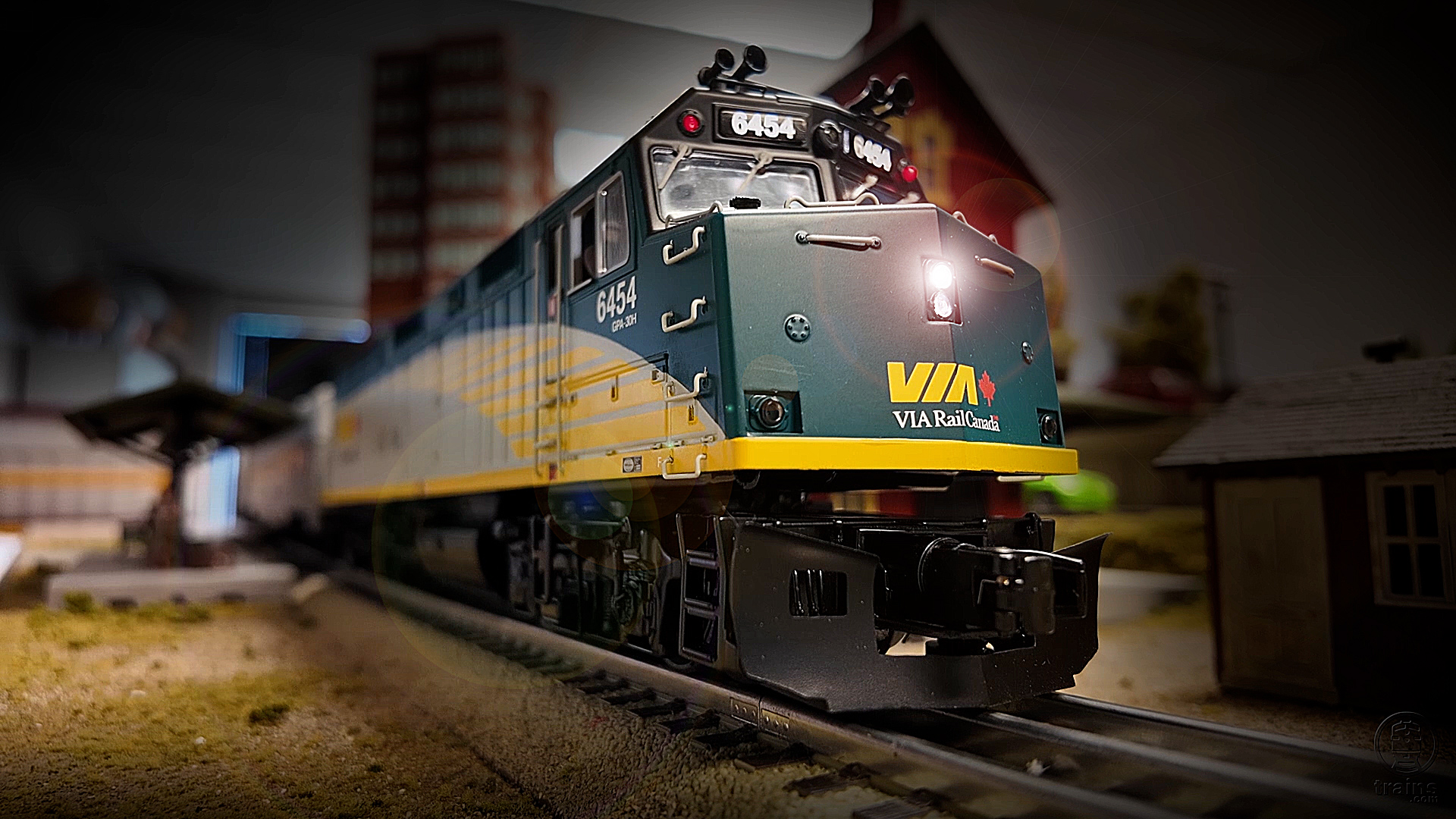




BEAUTIFUL ENGINE AND TENDER,BUT IT IS VERY COSTLY.IF YOUR RICH AND CAN AFFORD IT I SAY GET IT AS FOR ME I'LL TRY TO FIND ANOTHER 2-6-0 FOR ALOT LESS MONEY..
It truly is a magnificent looking piece of equipment and as it is said "what you pay is what you get". However, I believe it belongs to a select group of modelers who not only are able to appreciate it but more so are able to afford it. I do not belong to that group, so I'll just envy and keep drooling. Thanks for the video insight.
When a teenager I rode in the cab of these a couple of times. Actually the only steam loco I ever rode cab in. Yes you pay for what you get, but figure how many hours it would take to build from scratch, even at minimum wage.
Was the SP the only line to run 2-6-0's? I model Midwestern region lines in HO, circa 1910. Did any of those lines out of and into Chicago run Moguls?
DSE
Sunset's model is really spectacular as is the video. It's a shame it costs so much because it will eliminate may modelers who would love to own one…including me! I hope I can "bite the bullet" sometime in the future because I am an avid SP fan. Nice job Sunset.
Like most, the engine is beautiful and looks great on the layout. Sound is awesome but the engine is just plain out of my price range.
I'm a heavy duty Southern Pacific fan and this is one of my favorite SP engine types and era. Pretty impressive model all around, but way out of my price range.
I purchased my first brass locomotive in 1966 or 67. It was an MEW Colorado Midland 2-8-0 and it cost me a whopping $50.00 at that time. The price for a gallon of gas that year was 20 cents per gallon. In 2009 it is approaching almost fifteen times that much. Believe me when I say that $50.00 was very hard to come by then. If you keep the ratio the same that MEW locomotive would cost $750.00 today and it was unpainted, poor running and not very detailed. It required hours of tinkering, painting and detailing to produce a model that I promise does not even come close to the product offered by Sunset. For my money the M-6 is a bargain!! I would love to have been able to take it out of the box, place it on the rails and high ball. Let's keep things in perspective. You get a whole to more bang for your buck now.
It is also out of my price range.
Howw does it run? For that kind of money it ought to be really smooth. The high starting speed does not bode well. I think it's great that you can run it on both DC and DCC
A fantastic model , but a little pricey at this time. Thanks for the preview , Keep up the good work
I'm a newbie and loved this engine, but again too expensive for me
I grew up with SP, the Oakland Mole (where the M-6's were frequent visitiors. Film clip looks and sounds good, bue I have to agree with previous comments, too many $$$$$
nice'but too pricy
The price is reasonable for a limited run (25 of each engine number) brass engine.The pictures on the Sunset Models website show a very detailed engine. I hope sometime to see something along this line for smaller UP/OSL steam engines sometime.
The engine looks great in the video, and it seems to have all the things a modeler would want. BUT… if I am going to spend $700.oo on an engine it is going to be more impressive than this. After all some of us just want to run trains…
I'm have been an Southern Pacific fan for many years my dad worked for the company some 38 years till he retired. I used to see that type of engine in the yard. boy I would like to have but it way to costly for me. I will wait till the price goes down.
Was pleased to see the M-6 being featured. I believe the Boston & Maine had a few but not sure. I purchased a B-15 B&M in 1977 (brass) for $120. That was a lot back then. Still have it. Sunset's price of $700 I probably not out of line for some but it is for me. I'm just starting a new layout after 30 years and would love to have some of the fine brass models being produced today but will have to stick to stick to plastic. Nice M-6 Sunset.
Good looking model, but compared to other brands it is way over priced, ie: MTH. I am a big SP fan, who grew up in Houston, but model is just to expensive. MY MTH GS-4 with DCC/Sound and smoke did not cost that much
Beautiful…… But WAY to expensive.
I bought the M-9 version of the model, road number 1814, because that engine was leased to the Northwestern Pacific Railroad for about a year and a half. I grew up in Ukiah and am a huge fan of the NWP, and given how hard (nigh on impossible) it is to find steam power for this road I felt having 1814 was the next best thing (I don't currently have the skills or time to scratch build a steam engine). The model is expensive (I got the sound-equipped version from a reputable dealer on eBay for $650, shipping included), but given the added detailing (especially on the backhead) and the NWP connection it was worth it to me. Some of the plastic Proto 2000 steam I've purchased is about half the price and doesn't look nearly as nice. This is the first brass model I have purchased and will likely remain the only brass steam loco on my roster for a long time to come, but even with the high price tag I'm very happy with the purchase and feel no buyer's remorse.